
Last Updated on November 6, 2025 by David
Is It Possible to Restore Marble to Its Original Splendor?
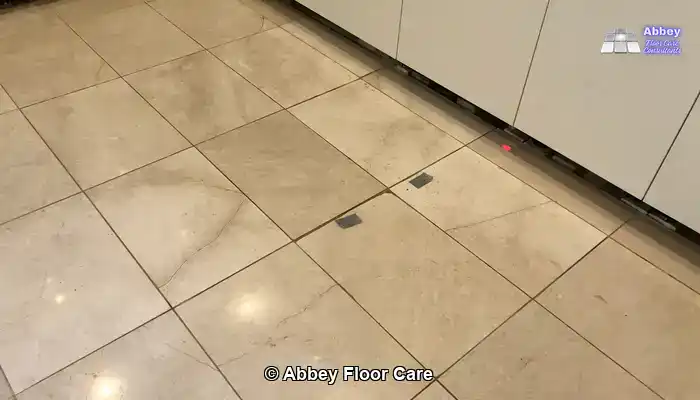
Crucial Marble Maintenance Tips for Homeowners Across the UK
Marble is a luxurious material renowned for its elegance and aesthetic appeal. However, over time, it may lose its original sheen, vibrancy, and clarity that first attracted homeowners. Common issues include scratches, dull patches, etch marks, and persistent stains, leading many to wonder if their cherished marble can indeed regain its former “like new” look. This extensive guide delves into the realistic potential of restoration, clarifying its limitations while offering valuable advice on maintaining stunning results for years to come. Whether dealing with acid damage, significant wear, or an aging surface, being informed about the restoration process enables you to make knowledgeable choices regarding your stone’s future.
Understanding the Meaning of “Like New” in Marble Restoration
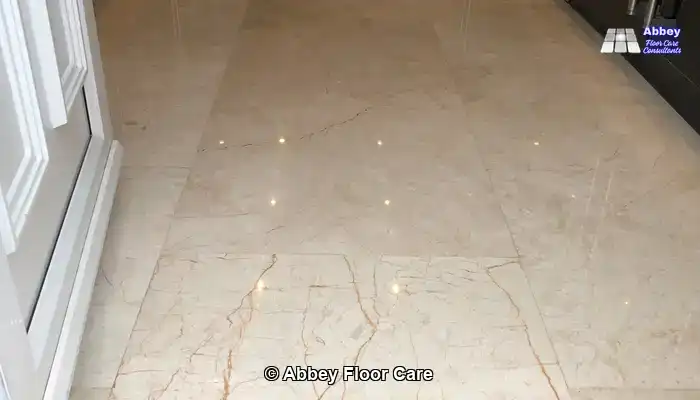
Reinvigorating Marble's Original Shine, Clarity, and Color
When homeowners express their wish for marble to regain a “like new” appearance, they often refer to the original shine and clarity of the stone — the way light dances across its surface, revealing the depth of its natural colors. A successful restoration process can recreate this breathtaking effect by adeptly removing surface damage and achieving a polished finish. The outcome is a floor that looks vibrant, smooth, and exceptionally clean, often indistinguishable from a newly installed slab. It is essential to recognize that achieving this level of restoration necessitates expertise and the utilization of appropriate techniques to ensure enduring results.
Identifying Cosmetic Wear Versus Structural Damage in Marble
It is imperative to distinguish between cosmetic wear and deeper structural issues when assessing your marble. Surface scratches, dullness, and light etching can typically be resolved through honing and polishing methods. However, more significant concerns such as cracks, chips, and internal discoloration may not completely vanish. Restoration can dramatically improve the visible and tactile characteristics of the marble, yet it does not reconstruct the stone itself. A clear understanding of these distinctions sets realistic expectations, ensuring satisfaction with the final results.
Exploring the Boundaries of Marble Restoration: What Can It Accomplish?
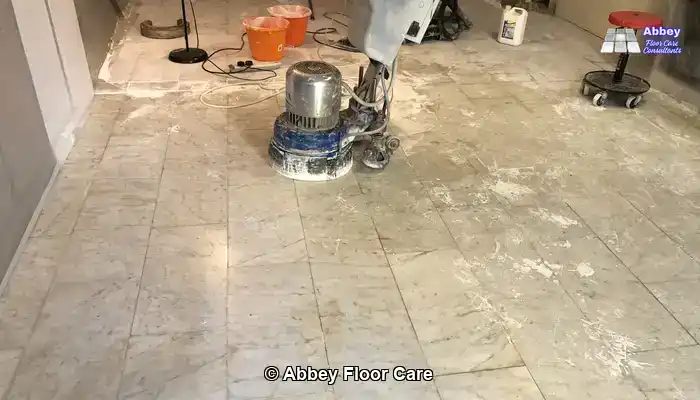
Strategies for Addressing Deep Scratches, Chips, and Acid Etching in Marble
Marble restoration techniques can effectively eliminate most surface-level damage, such as scratches and mild etching caused by acidic substances like lemon juice or vinegar. These imperfections can dull the finish and obscure the stone’s inherent clarity. However, honing and polishing techniques can generally restore a smooth, reflective surface. More severe scratches and chips will necessitate more intensive methods, such as grinding or filling. While the overall appearance can see significant enhancement, some flaws may persist, appearing subtly visible depending on their depth and position within the stone.
Recognizing Signs of UV Damage and Internal Discoloration in Marble
Marble subjected to intense sunlight over time may develop fading or yellowing.
Here’s a closer look at why this happens:
UV Ray Damage (Fading): Sunlight, particularly its ultraviolet (UV) rays, can cause the natural pigments within the stone to fade gradually. This photochemical reaction results in the color becoming less vibrant or appearing “washed out.” This effect is particularly evident in certain marble colors.
-
- <a href=”https://www.abbeyfloorcare.co.uk/home-garden/travertine-floor-cleaning-service-expert-solutions/”>Yellowing</a>: Yellowing in white marble often arises from prolonged exposure to UV light, which accelerates the natural discoloration process.
- Iron Oxidation: Many types of white marble contain trace amounts of iron. When exposed to moisture and oxidizers (like air or water), this iron can oxidize, a process intensified by sunlight and heat, leading to yellow or brown discoloration.
- Surface Degradation: UV rays can also deteriorate any sealants or resins applied to the marble, resulting in yellowing and dulling the surface’s overall appearance.
While marble is a robust material, it is more prone to UV-induced changes than harder stones such as granite or quartzite. This is especially relevant for marble used in outdoor locations or indoor areas that receive prolonged, intense, direct sunlight (for instance, a sunny windowsill or near a large, unshaded window).
To effectively safeguard your marble surfaces, it is frequently recommended to utilize:
- UV-resistant sealants that shield the surface from harmful rays
- Shades, blinds, or curtains for indoor installations
- Proper placement to limit exposure to direct sunlight.
While restoration can improve the surface appearance, it cannot reverse color changes that have originated beneath the surface of the marble.
Insights from Before and After Images of Marble Affected by Iron Oxide Stains
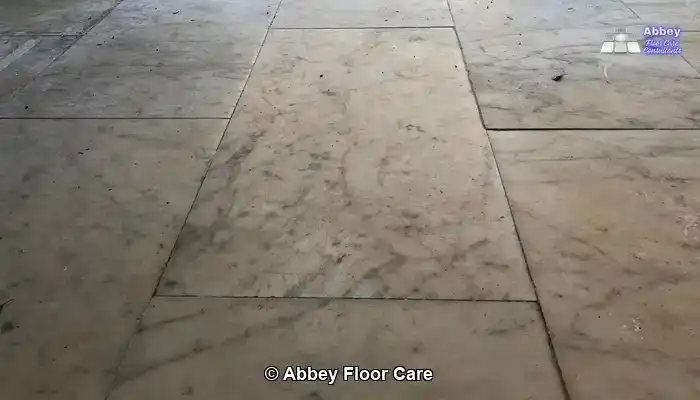
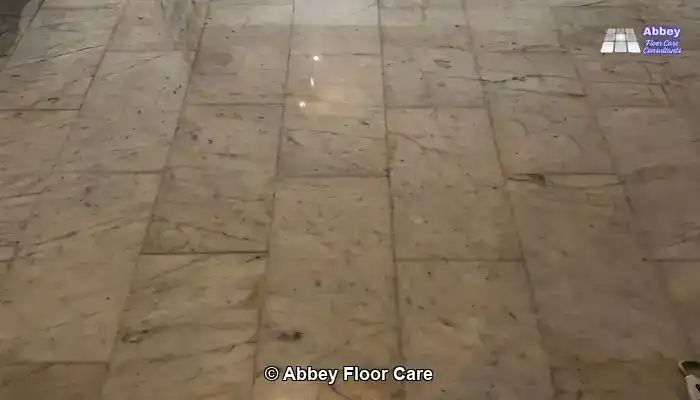
In cases like these, the focus shifts from achieving a “like new” appearance to creating a cleaner, more uniform finish that minimizes visual distractions while enhancing the overall aesthetic of the space.
Key Steps in Honing, Polishing, and Fully Restoring Marble
When Is Polishing Sufficient for Marble Restoration?
Polishing acts as a surface-level treatment aimed at restoring shine by smoothing out fine scratches and boosting the reflectivity of the marble. It proves particularly effective for dull marble that remains otherwise intact. If the stone has lost its gloss due to light wear or mild etching, polishing alone might suffice to restore a “like new” appearance. However, it is critical to understand that polishing will not remedy deeper flaws or correct uneven surfaces needing more thorough treatment.
When Should Honing or Grinding Be Employed in Marble Restoration?
Honing involves a more comprehensive process than polishing, as it removes a thin layer of marble to eliminate scratches, etch marks, and surface damage. In cases of more serious wear, grinding may be essential to level the stone and reset the finish entirely. These processes are more intensive but yield remarkable results. When homeowners desire a truly fresh surface — one that looks and feels like new — honing or grinding is often the necessary step to achieve that level of restoration.
Comparing DIY Kits to Professional Restoration for Marble
What Can DIY Kits Realistically Achieve in Marble Restoration?
DIY marble restoration kits typically include polishing powders, sealers, and basic tools designed to enhance surface shine and minimize the appearance of light etching. For small areas or minor dullness, these kits offer a cost-effective solution for refreshing the stone. However, it is crucial to recognize that they seldom produce a genuine “like new” finish. Lacking professional-grade abrasives and specialized machinery, deeper imperfections frequently remain unaddressed, leading to inconsistent results across various sections of the marble.
Why Are Professional Tools Essential in Marble Restoration Processes?
Professional restoration transcends basic tools, employing diamond abrasives, rotary machines, and graded polishing compounds that work through a staged process. This advanced equipment allows skilled technicians to level the surface, eliminate deep damage, and refine the finish with exceptional precision. DIY kits simply do not possess the power and control necessary for achieving uniform results over larger areas. For homeowners pursuing a flawless, long-lasting outcome, leveraging professional tools and expertise can significantly influence the final appearance of the marble.
What Is the Expected Longevity of Restored Marble Appearance?
What Key Steps Are Necessary for Sealing, Cleaning, and Managing Wear Patterns?
Following the completion of the restoration process, sealing the marble becomes a vital step that helps to preserve the finish by blocking moisture and reducing the absorption of stains. A high-quality sealer can offer protection for 1 to 3 years, contingent on foot traffic levels and usage. Regular cleaning of the marble with pH-neutral products while steering clear of abrasive pads or acidic spills will greatly prolong the life of the restored surface. In high-traffic zones, the finish may gradually lose its luster over time, but with diligent care, the clarity and shine of the marble can be maintained for many years.
Can Restoration Be Repeated for Continued Marble Maintenance?
Indeed, marble restoration is a repeatable process. If the surface becomes dull or scratched again, it can be rehoned and repolished to restore its previous glory. However, it is essential to note that each cycle will remove a slight amount of stone, so it is advisable to minimize excessive wear between treatments. Homeowners who follow a consistent maintenance routine — which includes resealing and gentle cleaning — will discover that restoration remains a wise investment over time, preserving their marble’s beauty and ensuring it is well-maintained.
Will Restored Marble Continue to Develop a Natural Patina Over Time?
Understanding the Difference Between Natural Patina and Artificial Gloss in Restored Marble
Even post-restoration, marble will continue to age naturally. Over time, subtle wear patterns, micro-abrasions, and environmental exposure contribute to the formation of a soft patina — a gentle sheen that reflects the stone’s unique history. This natural evolution stands in contrast to the artificial gloss created through polishing and sealing. A restored surface may initially appear brand new, but as time progresses, it will regain character. For many homeowners, this evolving finish adds charm and authenticity, especially in older properties where marble forms an integral part of the home’s narrative and aesthetic.
Addressing Common Marble Restoration Questions from Surrey Homeowners
What Are the Average Costs Involved in Marble Restoration in Surrey?
The costs associated with marble restoration can vary significantly based on numerous factors, including the size of the area, the marble's condition, and the extent of restoration required. Light polishing is generally more affordable compared to comprehensive grinding and honing. In Surrey, homeowners often opt for restoration when the marble is located in a highly visible area or as part of a long-term property enhancement strategy. While costs can differ markedly, the true value lies in preserving the stone and elevating the overall appeal of the home.
Can All Marble Types Be Successfully Restored?
Most types of marble can indeed be restored; however, the achievable results depend on the specific composition and current condition of the stone. Softer marbles may wear more quickly and respond favorably to polishing techniques. In contrast, harder varieties may require more aggressive honing methods. Some exotic stones, characterized by heavy veining or significant color variation, may not return to a uniform finish post-restoration. A professional assessment is crucial in determining what is realistically achievable for your particular flooring.
Will the Restored Finish Match the Original Marble Installation?
The primary goal of restoration is to replicate the original finish; however, the degree of exact matching is influenced by how the marble was initially installed and treated. If the stone underwent factory polishing, the restored surface may display slight differences in gloss level or texture. Nevertheless, most homeowners find the end result visually consistent and considerably more appealing than the worn surface they began with. The focus here is on improvement rather than perfection — and in most cases, the transformation is nothing short of remarkable.
The Article Will Restored Marble Ever Look As Good As New first found on https://www.abbeyfloorcare.co.uk
The Article Restored Marble: Can It Achieve a Like-New Finish? appeared first on https://fabritec.org
The Article Restored Marble: Achieving a Like-New Finish Was Found On https://limitsofstrategy.com

